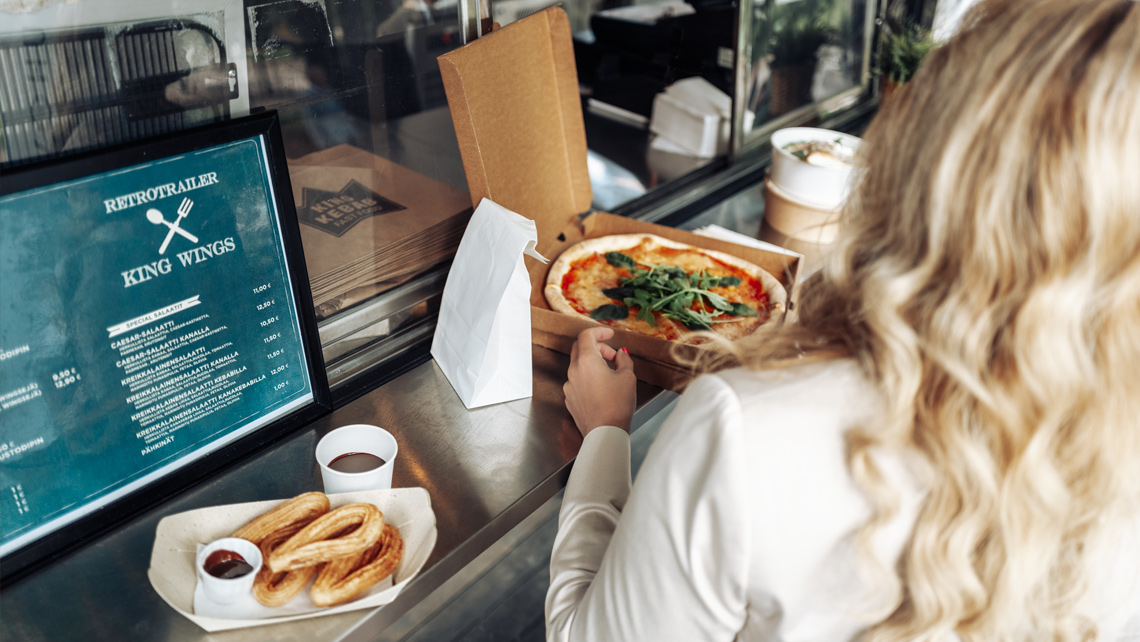In the FMCG packaging value chain, materials manufacturers across the spectrum are jockeying for market share, especially the paper and plastics industries. When it comes to material choices and packaging composition, it remains to be seen who’s bidding on the winning horse. Wouldn’t we all want to know which solutions consumers, brands and policymakers will prefer and prioritize?
Whatever the case will be in 10-20 years, if you are a brand owner or a materials manufacturer, it seems safe to say if you’re not actively investing in your sustainability performance and reducing the environmental footprint of your packaging today, you’re not even at the race.
Why packaging?
Packaging is in the spotlight thanks to consumer interest in sustainability, regulatory pressure and bold environmental commitments from retailers. FMCG brands are taking note and adjusting accordingly. Packaging helps brands communicate their values without saying a word because it’s easy for people to see and touch. It has become a symbol for sustainability – one that often requires little explanation to make a real impression. For example, a brown paper package screams recycled content. A plastic container reminds people of the Great Pacific Garbage Patch.
If you’re not actively investing in your sustainability performance and reducing the environmental footprint of your packaging today, you’re not even at the race.
To appeal to consumers and appease other stakeholders, FMCG brands have reduced packaging, opted for sustainably-sourced materials and increased recycled content. They’ve pledged to reduce the carbon footprint of their value chains and reduce waste. They’ve included recycling awareness in marketing campaigns.
So which materials are the top choice right now? Fiber-based packaging has a bit of a head start, in part because the main raw material is renewable by nature. Ease of recycling also plays a role.
Recycling systems: a major factor
Consumers are already in the habit of recycling paper. In Europe about 80% of used fiber-based packaging is recycled. This makes it an attractive option for brands that want to improve the environmental footprint of their packaging from cradle-to-cradle. There are, however, substantial differences in collection and recycling efficiency across countries, as well as across material types. Generally, some fiber-based packaging (e.g. corrugated board) is easier to recycle than others (e.g. liquid packaging board; laminated and extrusion coated barrier boards).
By comparison, only some 40% of plastic packaging is currently recycled in Europe. Moreover, what constitutes plastic is often unclear – as has been seen with the recent EU Single-Use Plastics (SUP) legislative exercise, triggered by the marine litter crisis.
Brands embrace packaging innovation
But it would be foolish to underestimate the innovation capability of the huge machine that is the plastics industry, as well as their ability to collaborate with FMCG companies, where their relationships run deep. For example, Evian recently announced a water bottle made from 100% recycled plastic materials (aside from the cap). In lieu of a label, the logo is now engraved directly on the bottle. FoodBev Media highlighted Evian’s breakthrough bottle in their reporting on the top 5 beverage trends for 2021, which included packaging innovation. If you think plastic is the star of their story, Diageo stole the spotlight with a new paper-based Johnnie Walker whiskey bottle developed by Pulpex, a consortium that includes Unilever and PepsiCo.
Even with great headlines and a head start, the fiber-based value chain has some challenges. Materials that are fully recyclable in theory may not be recycled in practice. This is partly due to complex multi-materials and technologies like laminates, labels and waxed paper. Less than 50% of liquid packaging board, laminated coated barrier boards and extrusion coated barrier boards are currently recycled in Europe. Dispersion coated barrier board is recycled at a rate of 70%. For fiber to maintain its current competitive advantage when it comes to sustainable packaging, we can and must help improve these rates by overcoming a few technical hurdles.
What can chemistry do?
Chemistry is the “secret ingredient” of fiber-based packaging, the invisible enabler that can help with many properties of the material, like the use of recycled fiber, grease and liquid resistance, and lightweighting.
Chemistry can help with packaging recyclability by improving the re-processing of materials in mills (easy re-pulping). It can also enable bio-based barrier technologies (i.e. repelling grease and liquid), which are important characteristics for example in food packaging. Lightweighting is another key area. Chemistries for improved strength support overall material efficiency so companies can do more with less.
As an upstream player in the total value chain, at Kemira, we are doing our part in all of these areas. Another example is increasing the share of renewable raw materials in our own product recipes by offering an internal sizing chemistry based on sunflower oil instead of fossil-based olefins.
When the sustainability of packaging is evaluated across its full lifecycle, the pieces that form the whole become one. That’s why we are looking to partner with other industry players.
Collaboration and harmonization
Private sector collaboration is a great step, but it won’t be enough. Policymakers also have an important role to play. If “each their own” was ever a viable political strategy, it will simply not work with recycling systems. Lawmakers must work closely with the private sector and with each other. The global waste issue can only be solved through a well-coordinated joint effort on every level. For big global companies, the predictability of the regulatory landscape is a vital component of investment allocation and risk management.
Take the example of Germany’s good (though still not perfect) recycling system. It is the result of harmonized standards and responsibilities for collection and sorting. Very importantly, it also takes convenience into account. On the other hand, the UK has fragmented, decentralized systems and far weaker results.
In all of this, the legislators play a key role in either setting clear frameworks for what needs to happen – or adding another layer of complexity, confusion and red tape.
Domestic reprocessing capacity is also an important factor – something that many countries around the world became acutely aware of after several Asian countries banned imports of waste, like China did in 2017. In all of this, the legislators play a key role in either setting clear frameworks for what needs to happen – or adding another layer of complexity, confusion and red tape.
The fiber-based value chain has also recognized the need for a joint effort. We have organized alliances such as the 4evergreen, an initiative of the Confederation of European Paper Industries (Cepi). Kemira is a proud member. But industry needs to move fast, perhaps faster than it’s used to – and it must move together.
Packaging is everywhere. We use it every day. That means FMCG companies and materials providers have a critical role to play. We want to do our part and we want to work with you.

